Categories
Environmental Sciences
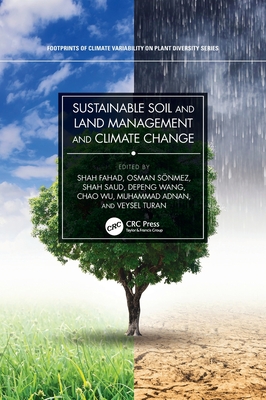
Sustainable Soil and Land Management and Climate Change
Shah Fahad, Shah Saud, Depeng Wang, Chao Wu, Muhammad Adnan, Veysel Turan, Osman Sonmez
The third volume of Sustainable Soil and Land Management and Climate Change presents a complete overview of plant soil interactions in a climate affected by greenhouse gas emissions and organic carbon. It presents approaches and managements strategies for the stabilization of soil organic matter. The latest in the respected Footprints of Climate Variability on Plant Diversity series, this book enhances the reader’s knowledge of the preservation of organic matter through microbial approaches as well as through soil and plant interactions. Written by teams of specialist scientists, it presents research outcomes, practical applications and future challenges for this important field. This book is written for students of agronomy, soil science and the environmental sciences as well as researchers interested in management technologies to improve soil fertility.
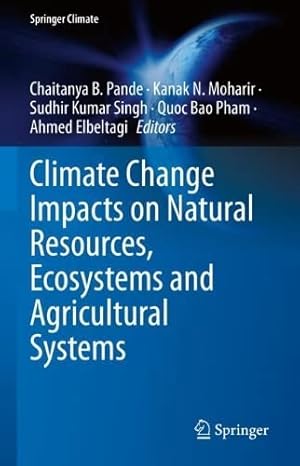
Climate Change Impacts on Natural Resources, Ecosystems and Agricultural Systems
Chaitanya Baliram Pande, Kanak N. Moharir, Sudhir Kumar Singh, Quoc Bao Pham, Ahmed Elbeltagi
This book on the climate change, natural resources, landscape and agricultural ecosystems describes the contributing challenges related to natural resources, soil erosion, irrigation planning, water, landscape, sustainable crop yield agriculture and biomass estimation. Natural resources and agricultural ecosystems include factors from nearby regions where landscape and agriculture practices (direct or indirect) interface with the water, vegetation, irrigation planning and ecology. Changes in climatic situations impact all the natural resources, ecology, and landscape of agricultural systems, which affects productivity. This book summarizes the various aspects of soil erosion, soil compaction, soil nutrients, aquifer and water with respect to vegetation, crops, pest and sustainable yields and management for the future. It also focuses on the use of precision techniques, remote sensing, GIS technologies, IOT and climate related technology for the sustainability of ecology, natural resources and agricultural areas, along with the capacity and flexibility of natural resources and agricultural societies under climate change. This book presents both theoretical and applied aspects and will help as a guide for future research. The contents will appeal to researchers, scientists, and NGOs working in climate change, environmental sciences, agriculture engineering, remote sensing, natural resources management, remote sensing, GIS, hydrologist, soil sciences, agricultural microbiology, plant pathology and agronomy.
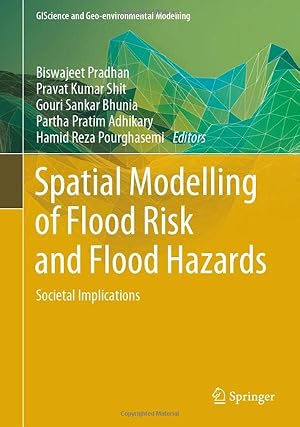
Spatial Modelling of Flood Risk and Flood Hazards: Societal Implications
Biswajeet Pradhan, Pravat Kumar Shit, Gouri Sankar Bhunia, Partha Pratim Adhikary, Hamid Reza Pourghasemi
Floods and flash floods with hydro-meteorological and tropical cyclones are the some of the most devastating natural disasters causing massive damages to natural and man-made features. Flood hazards are a major threat to human life, properties (agricultural area, yield production, building and homes) and infrastructures (bridges, roads, railways, urban infrastructures, etc). Flood hazards susceptibility mapping (risk assessment) and modelling is an essential step for early warning systems, emergency services, prevention and mitigation of future environmental and social hazards and implementation of risk management strategies. Due to the lack of proper information, technology-based policies and strategies, mapping and modelling can often not be implemented to the best possible level. Geo-spatial techniques have enjoyed rising interest in recent decades among the earth environmental and social sciences research communities for their powerful ability to solve and understand various complex problems and develop novel approaches toward sustainable earth and human society. By linking geo-spatial computational intelligence techniques with societal and environmental-oriented problems, this book demonstrates geospatial technology approaches to data mining techniques, data analysis, modelling, risk assessment and visualization and management strategies in different aspects of flood hazards. We believe that a diverse group of academics, scientists, geographers, hydrologist, remote sensing and GIS expertise, environmentalists, meteorologists and computing experts with a common interest in geospatial sciences within the earth environmental sciences and humanistic and social sciences will find this book to be of great value.
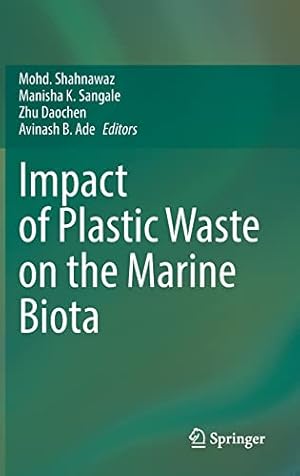
Impact of Plastic Waste on the Marine Biota
Avinash B. Ade, Mohd. Shahnawaz, Manisha K. Sangale, Zhu Daochen
This contributed volume focuses on the effects of macro, meso, micro, and nanoplastic waste on marine biota. It discusses the threats posed by plastic waste on the flora and fauna in the marine environment. This book will help in understanding different aspects of plastic waste generation, its transportation with different natural and anthropogenic ways, its accumulation at the seacoast, and its impact on marine biota. The book also suggests strategies for saving marine life from threats posed by plastic waste and presents methods to reduce its generation using different strategies. This book is of interest to teachers, researchers, climate change scientists, capacity builders, and policymakers. It also serves as additional reading material for undergraduate and postgraduate students of Ecology, Botany, and Environmental Sciences.
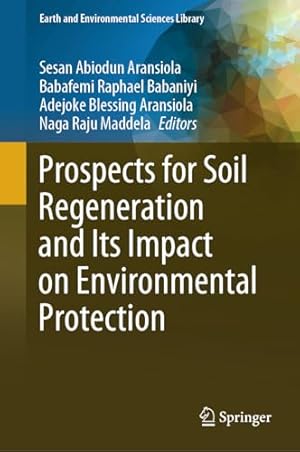
Prospects for Soil Regeneration and Its Impact on Environmental Protection
Sesan Abiodun Aransiola, Babafemi Raphael Babaniyi, Adejoke Blessing Aransiola, Naga Raju Maddela
Soil is a complex system of inorganic and organic materials, living organisms, water, and air. It is home to more than one trillion species of microorganisms. Soil also plays an important role in the global carbon cycle. Because plants absorb carbon from the atmosphere, convert it to plant tissue, and return it to the soil as plant residue, soils globally act as the world’s largest sink of active carbon. Soil has role to play in food production and safety. Soil contamination undermined by modern agricultural practices that deplete soil carbon stocks. Anthropogenic greenhouse gas emissions have been raising recorded temperatures since the Industrial Revolution. Greenhouse gas emissions from agriculture, forestry, and fisheries have almost doubled in the last 50 years and will increase by 30% by 2050 given the current trend. The primacy of arresting climate change is nowhere more evident than the adoption of 195 countries of the first legally binding global climate deal at the Paris Climate Conference in 2015. With atmospheric carbon dioxide (CO2) reaching 400 parts per million in 2016, soils can be an ally in bringing the CO2 level down to a sustainable level if protected for regeneration. Soil protection and regeneration is a technique that involves the conservative rehabilitation of soil ecosystem and farmland. This technique focuses on top soil regeneration, improving the water cycle, supporting biosequestration, enhancing ecosystem services, increasing biodiversity, strengthening the vitality and health of farm soil, and increasing resilience to climate change and landscape. Environmental protection not only improves soil health, productivity, and resilience to weather extremes, raising farm yields and income while strengthening regional food security in the face of a changing climate, but can also form part of a region’s broader climate strategy. This book is timely as more studies and reviews need to be reported about regenerating global polluted soil and the impacts on the environment, the benefit of both biotic and abiotic structure, thereby creating more awareness of environmental protection and sustainability. Thus, this book presents a vista to research on regeneration of lost resources in the soil and its impacts on the environment.